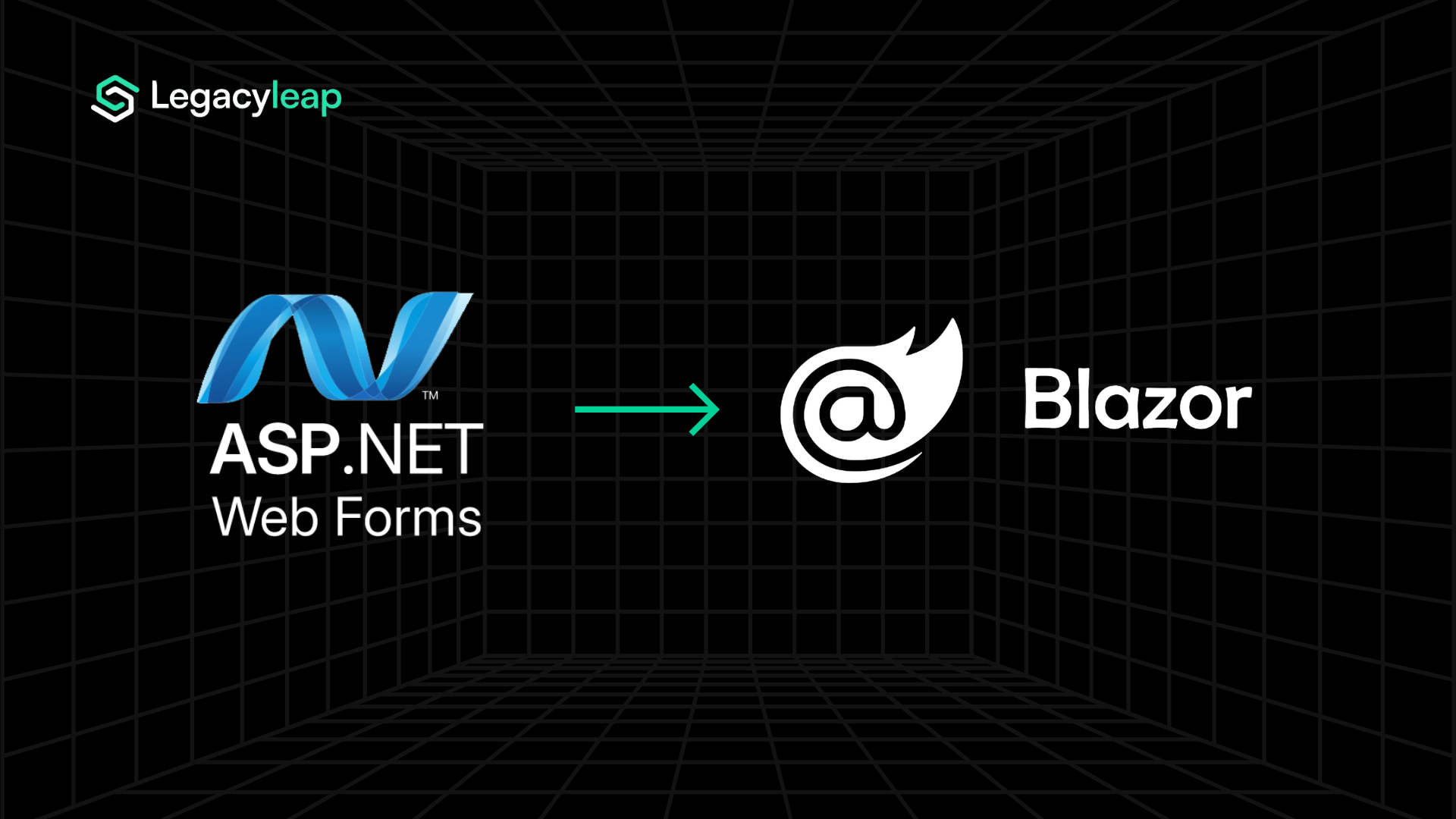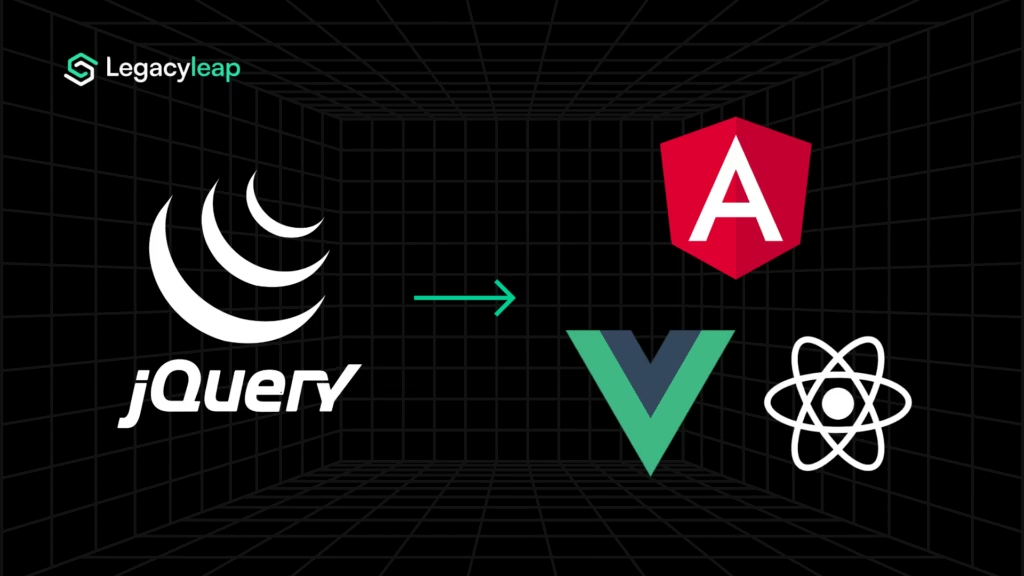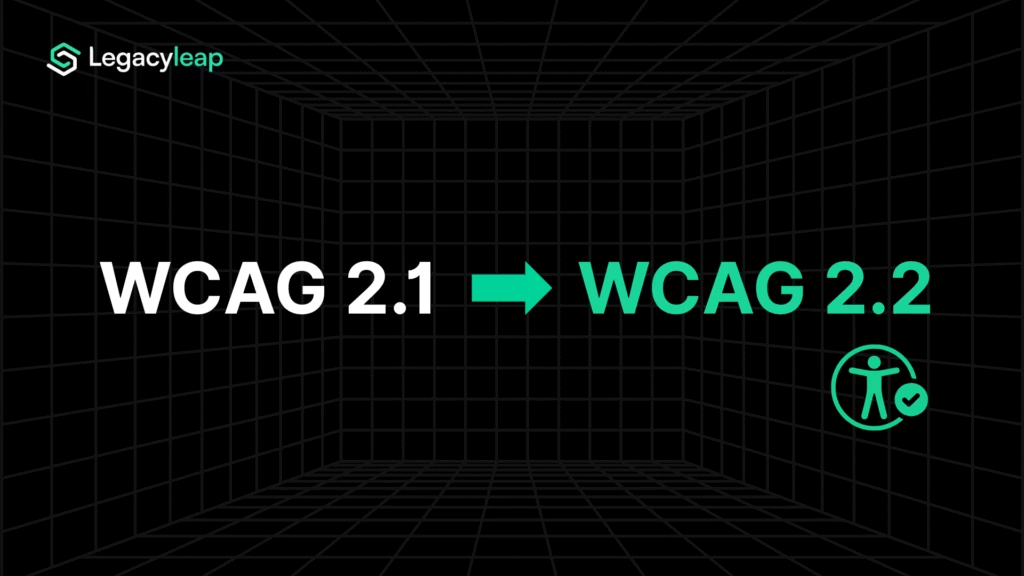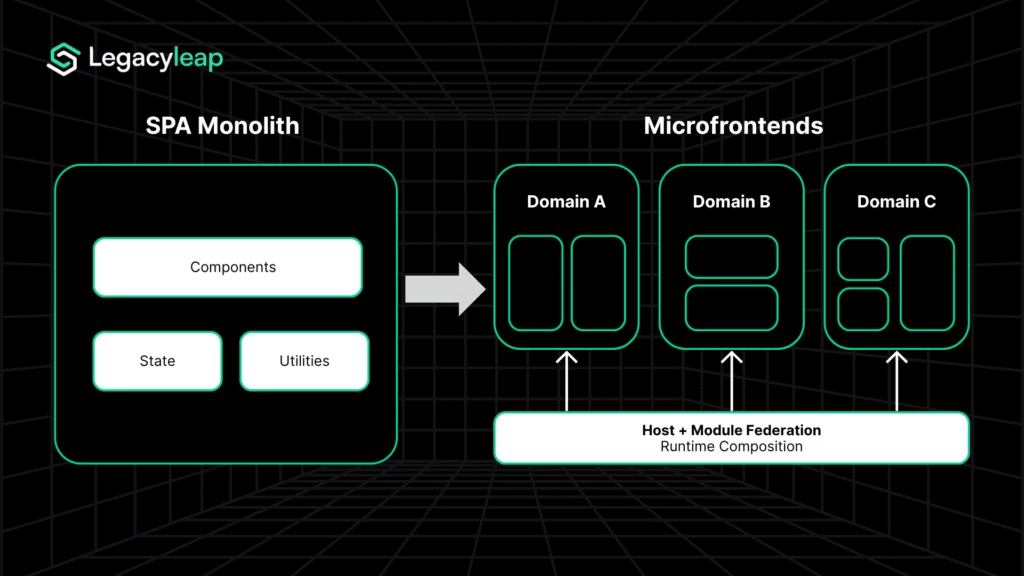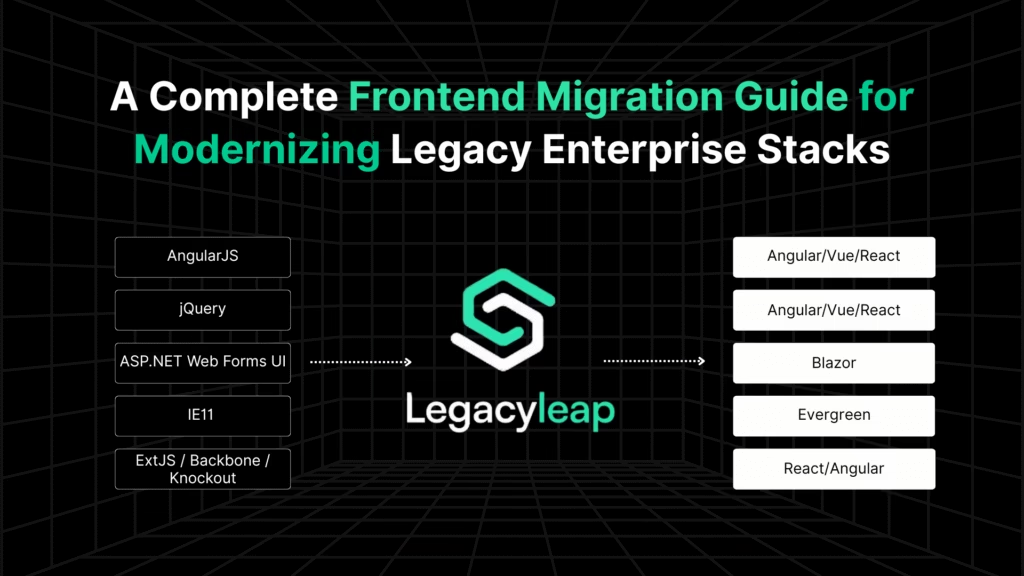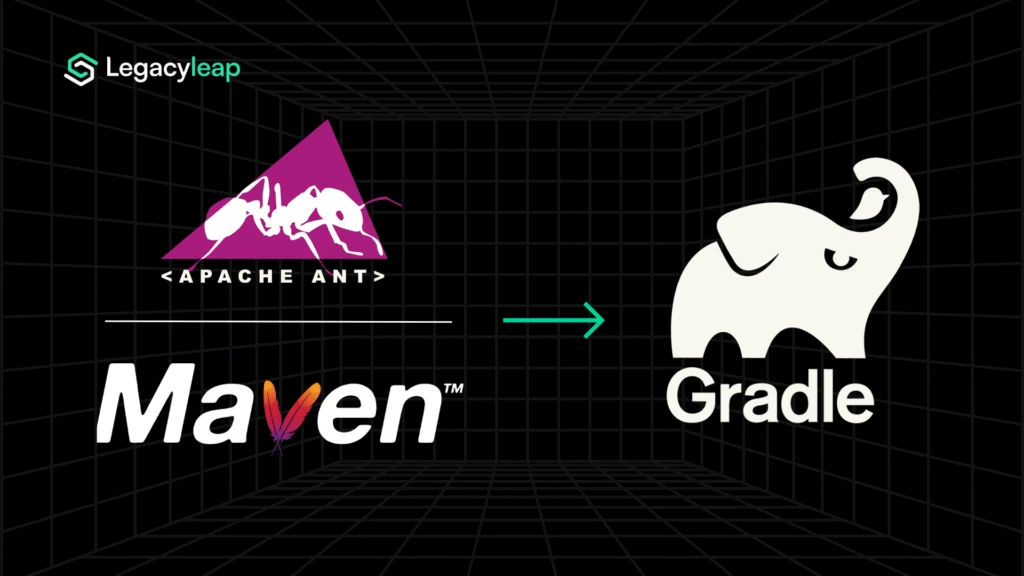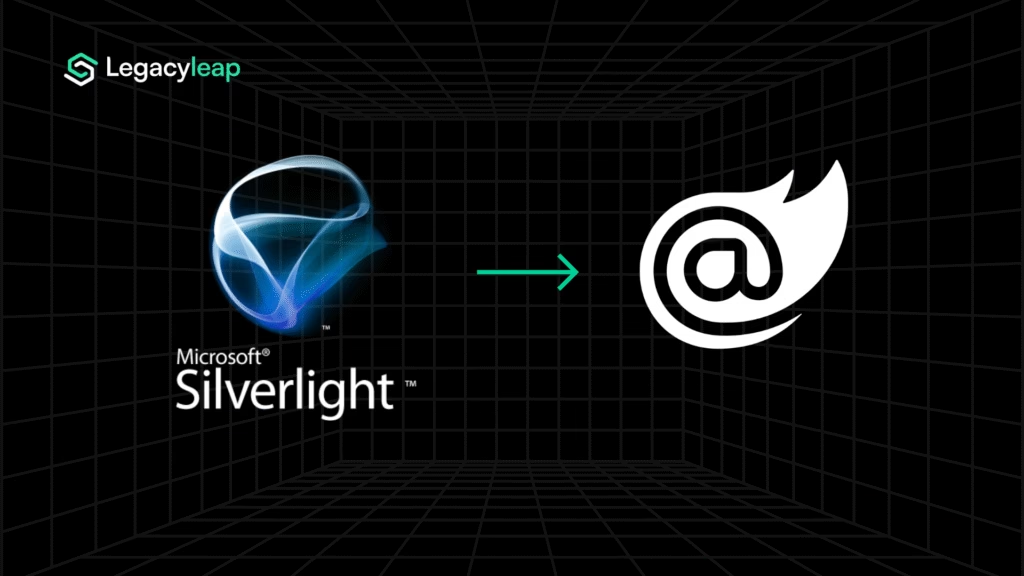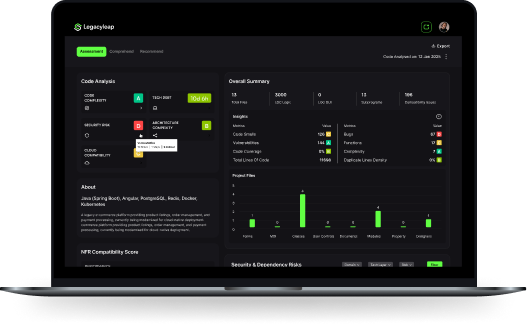Introduction: Why Web Forms Migration Can’t Wait
ASP.NET Web Forms is at the end of its lifecycle. It runs only on .NET Framework 4.8, which is locked in maintenance mode, limited to Windows, receiving security patches only, and with no roadmap for innovation. Microsoft made it clear that Web Forms will never be part of .NET 5, .NET 8, or future .NET releases.
For enterprises, this creates growing risk. Applications remain tied to Windows hosting, compliance exposure increases with every unsupported dependency, and developer talent capable of maintaining Web Forms continues to shrink.
Migration to a modern framework like Blazor is the only viable way to reduce technical debt and prepare for cloud- and AI-driven workloads.
This blog looks beyond the obvious “why” and focuses on the “how”: the business payoff of Blazor, the challenges that stall migrations, and how Gen AI-driven modernization provides a safer, faster path to execution.
Web Forms vs Blazor: What Enterprises Gain by Migrating
Blazor is Microsoft’s long-term bet for modern .NET applications, positioned to replace legacy UI frameworks like Web Forms. The advantages extend far beyond a new front-end:
| Capability | Web Forms (ASP.NET Framework 4.8) | Blazor (.NET 8 and beyond) |
| Language model | Server-rendered pages, ViewState, postbacks | Component-based, full-stack C# across client & server |
| State management | ViewState/session, heavy coupling | Component state, APIs, SignalR for real-time scenarios |
| UI controls | GridView, FormView, UpdatePanel tied to System.Web | QuickGrid, EditForm, vendor suites (Syncfusion, Telerik) |
| Pipeline model | HttpModules, Global.asax, IIS-bound | Modern middleware pipeline, Program.cs, cross-platform hosting |
| Deployment | Windows-only, IIS | Cloud-native, Docker/Kubernetes, Linux or Windows |
| Future support | No roadmap beyond .NET 4.8 | Actively developed, core part of Microsoft’s strategy |
Key benefits for enterprises:
- Unified full-stack .NET → Developers can use C# across client and server, reducing complexity and long-term maintenance overhead.
- Flexible render modes → In .NET 8, Blazor Web Apps unify Server, WebAssembly, and SSR, letting enterprises optimize for latency, scale, and cost.
- Cloud-native deployment → Runs seamlessly in containers and CI/CD pipelines, enabling Kubernetes scaling and modern DevOps practices.
- Ecosystem strength → Supported by Microsoft and mature vendor libraries, Blazor bridges parity gaps left by Web Forms controls with production-grade components.
For CIOs and CTOs, the payoff is clear: Blazor is a future-proof application layer aligned with Microsoft’s roadmap, lowering cost of ownership while enabling modernization and AI adoption without re-architecting again.
Also read: A Complete .NET Migration Guide for Modernizing Legacy Microsoft Stacks.
Key Challenges in ASP.NET Web Forms to Blazor Migration
Migrating from Web Forms to Blazor is not a straight line. Enterprises typically encounter the same blockers, and each one translates into delivery risk if handled manually:
- No direct upgrade path:
- Microsoft’s Upgrade Assistant does not support Web Forms. Migration requires rebuilding functionality in Blazor.
- Risk: Projects start with uncertainty in scope and effort, making timelines difficult to forecast.
- Microsoft’s Upgrade Assistant does not support Web Forms. Migration requires rebuilding functionality in Blazor.
- State management mismatch:
- Web Forms depended on ViewState and session variables; Blazor uses component state, persistent storage, or SignalR.
- Risk: Without a deliberate redesign, user sessions and workflows can break mid-migration.
- Web Forms depended on ViewState and session variables; Blazor uses component state, persistent storage, or SignalR.
- Control parity gaps:
- Common controls (GridView, FormView, UpdatePanel) lack direct Blazor equivalents. Teams must adopt QuickGrid, EditForm, or vendor components.
- Risk: Gaps inflate scope and create UI/UX inconsistencies that delay adoption.
- Common controls (GridView, FormView, UpdatePanel) lack direct Blazor equivalents. Teams must adopt QuickGrid, EditForm, or vendor components.
- Pipeline differences:
- HttpModules/Handlers and Global.asax don’t exist in Blazor. Functionality must be re-implemented in middleware.
- Risk: Legacy behavior often goes undocumented, making rebuilds brittle and error-prone.
- HttpModules/Handlers and Global.asax don’t exist in Blazor. Functionality must be re-implemented in middleware.
- Authentication coexistence:
- Phased migrations need shared authentication across Web Forms and Blazor. Cookie-sharing and hybrid logins are common.
- Risk: Poorly managed coexistence can introduce compliance issues or authentication failures in production.
- Phased migrations need shared authentication across Web Forms and Blazor. Cookie-sharing and hybrid logins are common.
For CIOs and CTOs, these challenges are more than technical hurdles. They’re why Web Forms migrations stall, overrun budgets, and expose the business to security and compliance risk.
How Gen AI Simplifies Web Forms to Blazor Migration
Historically, Web Forms migrations meant multi-year rewrites, expensive consultants, and unpredictable outcomes. Gen AI with compiler guardrails changes this equation by turning the riskiest steps into structured, verifiable workflows:
- Codebase comprehension at scale:
- Legacy Web Forms projects are parsed, with dependencies and business logic mapped into documentation, Swagger specs, and system diagrams.
- Impact: Leaders gain visibility into true scope and blockers before a line of Blazor code is written.
- Legacy Web Forms projects are parsed, with dependencies and business logic mapped into documentation, Swagger specs, and system diagrams.
- Pattern recognition and mapping:
- Constructs like ViewState, UpdatePanel, and GridView are identified and mapped to Blazor-native equivalents or vendor controls.
- Impact: Reduces uncertainty and accelerates functional coverage without trial-and-error rewrites.
- Constructs like ViewState, UpdatePanel, and GridView are identified and mapped to Blazor-native equivalents or vendor controls.
- Phased modernization blueprints:
- Instead of risky big-bang rewrites, Gen AI generates phased cutover strategies: YARP routing, cookie-sharing for hybrid logins, rollback options.
- Impact: Ensures business continuity while migration progresses.
- Instead of risky big-bang rewrites, Gen AI generates phased cutover strategies: YARP routing, cookie-sharing for hybrid logins, rollback options.
- Functional parity-first validation:
- Auto-generated test suites validate that Blazor modules behave identically to legacy Web Forms workflows.
- Impact: Functional parity is assured before deployment, minimizing risk of production regressions.
- Auto-generated test suites validate that Blazor modules behave identically to legacy Web Forms workflows.
The enterprise impact:
- Predictable scoping replaces uncertain project planning.
- Parity validation ensures business continuity during cutover.
- Migration timelines compress from years to months, with verifiable outcomes at every step.
With Gen AI, modernization stops being a gamble. Enterprises can treat Web Forms to Blazor migration as a managed, repeatable process instead of a one-off rewrite.
Also read: How Can Gen AI Drive Every Step of Your Modernization Journey?
How Legacyleap Accelerates ASP.NET Web Forms to Blazor Migration
Web Forms migrations are complex because they combine UI redesign, state rethinking, and authentication shifts. What typically stalls projects is not the code itself, but the lack of visibility, functional assurance, and compliance confidence. Legacyleap was designed to eliminate these risks by making migrations structured, predictable, and verifiable.
How the platform supports Web Forms to Blazor migrations:
- 100% dependency mapping: Web Forms pages, controls, and System.Web dependencies are parsed into compiler-grade models (ASTs + MLIR) and stored in graph databases. This creates a complete inventory of what must be rebuilt in Blazor, giving leaders clarity before execution.
- Control-to-component alignment: Legacy controls (GridView, FormView, UpdatePanel) are identified and mapped to Blazor-native equivalents or vendor components (QuickGrid, Telerik, Syncfusion). This reduces scope uncertainty and accelerates parity in the UI layer.
- Compliance-grade authentication transitions: Legacy Forms Authentication flows are automatically mapped to Blazor’s cookie/JWT middleware with OAuth2/OIDC alignment. Shared-cookie strategies ensure hybrid Web Forms + Blazor environments remain secure during phased rollouts.
- Functional parity guarantees: Golden workflows are captured from Web Forms and replayed against new Blazor modules. Regression tests are auto-generated and integrated into CI/CD pipelines, ensuring 100% functional parity validated before cutover.
- Deployment artifacts out of the box: Helm charts, Dockerfiles, and Terraform scripts are generated automatically, enabling containerized rollouts to Kubernetes or cloud PaaS without additional scripting effort.
Enterprise outcomes:
- Predictable scope: Dependency maps and control mappings eliminate surprises.
- Accelerated timelines: 6–12 month projects consistently compressed into 2–4 months.
- Lower TCO: Linux/Kubernetes hosting reduces infra cost; automation reduces manual engineering effort.
- Compliance assurance: Zero external API calls; all processing remains inside enterprise environments.
Instead of fragile rewrites, enterprises get a repeatable modernization framework moving Web Forms applications to Blazor with speed, safety, and verifiable results.
ROI of Migrating ASP.NET Web Forms to Blazor with Gen AI
| Metric | Traditional Migration | With Legacyleap Gen AI Platform |
| Code Transformation | Manual rewrites | 70% automated |
| Test Coverage | Manually written, partial | 90%+ auto-generated |
| Timeline | 6–12 months | 2–4 months |
| Developer Effort | 100% manual | 60–80% reduction in effort |
| Functional Accuracy | Depends on manual QA | Parity-first validation |
Conclusion: Plan Your Web Forms to Blazor Migration with Confidence
ASP.NET Web Forms is a dead end. Tied to .NET Framework 4.8, it has no future beyond security patches. Staying on it means increasing compliance exposure, higher maintenance costs, and shrinking developer talent.
Blazor, by contrast, offers a modern component model, flexible render modes, and full cloud-native readiness backed by Microsoft’s long-term roadmap. For enterprises, the payoff is clear: reduced cost of ownership, faster delivery cycles, and readiness for AI-driven workloads.
Legacyleap makes the migration path practical. With compiler-grade comprehension, control-to-component alignment, authentication blueprints, and CI/CD-validated parity, enterprises can modernize Web Forms applications faster, safer, and with measurable outcomes.
Start with a $0 Web Forms to Blazor migration assessment. In just two weeks, you’ll receive dependency maps, security and risk scans, and a feasibility blueprint, at no cost, and with no risk.
FAQs
Timelines vary by codebase size and complexity, but with Gen AI-driven automation, projects that traditionally took 6-12 months can often be completed in 2-4 months.
Yes. Incremental cutover strategies using YARP and cookie-sharing allow legacy Web Forms and Blazor modules to coexist until migration is complete.
Costs depend on project scope, but automation reduces manual effort by 60–80%, delivering the same outcomes in half the time and with lower resource dependency compared to manual rewrites.
Yes. Blazor Web App in .NET 8 provides flexible render modes (Server, WASM, SSR, Auto), is cloud-native, and supported by a strong ecosystem (QuickGrid, Syncfusion, Telerik). It is production-ready for enterprise use.
Remaining on Web Forms ties applications to .NET Framework 4.8, which is in maintenance-only mode and not supported in .NET 5+. This blocks access to new features, increases security risks, and prevents adoption of modern cloud and AI workloads.


